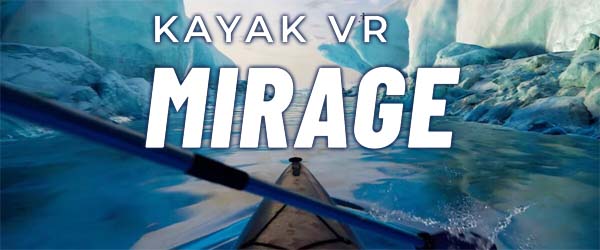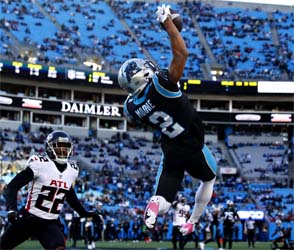
The PSVR2 set for the PlayStation 5 is a pretty neat piece of hardware. I bought one at release, and have been enjoying it a lot. I might even write a review for it after I've finished playing all of the launch titles that I've bought. The PSVR2 has a critical problem though: there aren't very many games for it. There weren't any high-profile AAA games that had VR compatibility except for Gran Turismo 7 and Resident Evil: Village, which were both already a year or 2 old when the PSVR2 released. Horizon: Call of the Mountain was a release title too, but it's more of a stand-alone expansion pack for Forbidden West than a full game.
Since it isn't backwards-compatible with PS4 VR games (even though the PS5 was heavily advertised as being fully backwards-compatible with PS4 games), the PSVR2 doesn't have the benefit of the established PSVR library. Hit titles like Star Wars: Squadrons, Resident Evil VII, or Déraciné sadly aren't playable on the PSVR2 (unless they get PS5 upgrades from the developers, which doesn't seem likely).
There is a silver lining though. This lack of titles may have been bad for the PSVR2 (and its initial sales figures), but it may have been a good thing for some of the smaller titles available on the platform. Those small titles had an opportunity to shine without there being any massive blockbusters to steal the spotlight or players' cash. One such small standout it a little virtual vacation game called Kayak VR: Mirage. After Gran Turismo 7 and Call of the Mountain, Kayak might be the premiere launch title for PSVR2 (even though it is also available on PC VR platforms, and has been for about a year).
The lack of any blockbuster PSVR2 launch titles allowed smaller games to shine in the spotlight.
Virtual vacation, without the sunburn!
Out of the gate, I was very impressed with how this game looks. I'm used to VR titles looking a little grainy and blurry (especially the original PSVR titles I played), but Kayak VR looks sharp as a crystal on the PSVR2! I'm sure it help that the game is only rendering relatively small environments without any people, and it doesn't have to do any complicated A.I. calculations or anything like that. Nevertheless, these exotic locales look absolutely gorgeous. This game is a textbook example of a "virtual vacation", as just sitting, taking a deep breath, and admiring the view is often just as good as the actual game. I can almost smell the salt in the air!
But there is an actual game here, and it's kind of a racing game, I guess? When you're done admiring the views, you can chose to play several races on each of the game's 4 maps. You won't be racing against actual people in real-time, however, as these races are all time-trials against ghosts of other players.
Races are time-trials against ghosts of other players.
Each race requires the player to navigate through a series of gates in a specific order. But these aren't your typical, hovering magic gates that you see in most video games. The gates are physical poles hanging from physical wires strung up throughout the map. If you hit one of the poles with your body, the kayak, or the oar, you'll be docked several seconds from your time as a penalty. These gates are pretty narrow, so completing these races requires some fairly precise handling and control of the kayak. It gets surprisingly difficult.
[More]
4d854981-611a-4aad-83c4-07b0e9f160fd|6|3.0
Tags:Kayak VR: Mirage, Better Than Life, PlayStation 5, VR, PS5, virtual reality, PSVR2, kayak, water, ocean, beach, race, exercise, nature, vacation, Costa Rica, Antarctica, Norway, Australia

Dramatic Labs is a relatively small, independent studio releasing their first game. As such, I want to give them some slack when it comes to the technical aspects of the game. That being said, the technical problems here aren't just superficial things like a choppy framerate or texture pop-in; they are things that have a big impact on the story, and which are impossible to ignore.
Even in the opening chapters (which I would expect to be the most polished part of the game), the dialogue frequently glitches out. It will replay the first line of a character's dialogue, and then skip the last line of their dialogue. At first, this was only a minor inconvenience because I was able to read the subtitles. But a few minutes later, the subtitles started disappearing as well, making it impossible for me to know for sure what was supposed to have been said. In a game that is supposed to be one long, interactive cutscene that requires the player to respond to dialogue, these problems with the playback of dialogue and subtitles is a big deal.
Furthermore, I suffered from a hard crash to the PS4's dashboard, and another soft lock when the game got stuck in tricorder mode and wouldn't accept any scan inputs. The tricorder soft lock happened at the same place in both of my playthroughs of the game, while trying to scan a miner's locker room for traces of DNA. If I walked to a certain corner of the kitchenette and pulled up the tricorder, the game wouldn't let me put the tricorder away or scan anything. In both cases, I had to exit to the game's main menu, reload the level, and then avoid that corner of the kitchenette in order to proceed.
Most of the game is responding to dialogue, so it's a big problem that some of the dialogue gets skipped.
These crashes and soft locks are particularly annoying because in both cases, they forced me to have to redo a large chunk of lengthy chapters of the game. And with no way to skip non-interactive sequences or dialogue, these replays really dragged. I don't necessarily mind having to sit through cutscenes and dialogue if I'm doing an alternate playthrough of the game, and hopefully seeing different scenes and experiencing different dialogue, but when I'm replaying the same section of a single playthrough and replicating the choices that I made verbatim, it's pretty annoying.
Also, this isn't really a "technical issue", per se, but the developers didn't bother to hide the PSN trophy information, and many of those trophies provide fairly explicit story spoilers. I also think they accidentally swapped the icons for a couple of pairs of trophies. Heck, even the save files (on PS4) aren't given useful labels. They all just say "Save Data". So if you wanted to backup and reload a save to find out what changes, you'll have to know the date and time of the relevant save because the filename won't help you.
Trophies spoil the story, and the save files all have the same name.
So let's get this out of the way right up front: if you want to play Star Trek Resurgence, you'll have to put up with a lot of technical problems and, let's call them "beginner's mistakes".
Playing with tricorders instead of phasers
But even though Dramatic Labs and co-developer Bruner House are not very experienced with creating games, they definitely do seem to know their Star Trek. If you can look past the glaring technical problems (most of which will hopefully be fixed with post-release patches down the line), Resurgence is a solid piece of Star Trek writing.
This "Telltale formula" is a very good fit for Star Trek, and I'm surprised that it's taken this long for someone to make a Star Trek game like this. Heck, I'm surprised that Telltale themselves never got the license to make a Star Trek game, since they seem to be huge nerds, and Trek seems like it would be right up their alley.
Tricorders might get more screen time than phasers.
A lot of Trek games fall into the trap of trying to adapt Trek into an action-heavy game genre. We've got examples like Elite Forces being a first-person shooter, Armada being a real-time strategy StarCraft clone, Invasion being a dogfighting Colony Wars clone, and so forth. These games usually prioritize phasers and photon torpedoes as the primary way that the player interacts with the play space. Resurgence, however, largely eschews phasers in exchange for pulling out a tricorder.
The Telltale formula (which is probably closest to old-school point-and-click adventures of LucasArts fame) allows the story and characters to take center-stage without having to try to force the majority of player interactions into the rigid boxes of a particular ludic genre. Resurgence is a "Choose Your Own Adventure" game, driven mostly by dialogue. It's basically one long, interactive cutscene that stops every minute or so to ask the player to chose 1 of 3 options for a response to a question.
[More]
ad01f2b0-ed4a-4380-aae0-7da8a4232a45|6|3.0
Tags:Star Trek: Resurgence, Star Trek, Dramatic Labs, Bruner House, Telltale Games, Spock, William Riker, Tkon, Portal 63, The Last Outpost, Hatori, Alydian, Piotr Michael, Amanda Celine Miller, Johnathan Frakes

I've been enjoying the PS5 and the PSVR2. In fact, I have a sneaking suspicion that when all is said and done, the PS5 might end up being my second favorite console after the PS2. Its novel controller has even rekindled a long-lost love of Gran Turismo. The PSVR2 has been a bit more of a mixed bag. The few games that I've played on it have been good. The set itself is an improvement over the previous hardware in almost every way. It has 1 wire to connect to the console instead of the million cables required to get the original PSVR to connect to the console and TV, and the screen is a lot clearer and more vibrant. The only real downside of the physical hardware is that it is not as comfortable to wear as the original PSVR.
The biggest problem with the PSVR2, however, isn't really a problem with the PSVR2 hardware itself. The problem is the lack of things to play on it. It doesn't really have any killer apps at launch. There's a handful of games that are hardly more than tech demos or glorified expansions for other games. The only full games to be playable in VR at launch were Gran Turismo 7 and Resident Evil: Village, which were already a year or 2 old when the PSVR2 released.
Worst of all, however, is that the PSVR2 does not support any of the original PSVR games for PS4. This is despite the fact that the PS5 was always marketed as being fully backwards compatible with PS4 games. I get that the PSVR2 hardware works under totally different principles compared to the original system (using motion-sensing hardware instead of tracking the headset's position with cameras). But that doesn't mean that Sony couldn't have developed an API to translate the inputs from the PSVR2 into commands that PSVR games could understand. In any case, the net effect is that those of us who bought a PSVR2 are stuck with the hardware's limited library and don't have the luxury of the back-catalog of great PSVR titles. That means no Star Wars: Squadrons, no Resident Evil VII, and no Ace Combat 7, among other PS4 VR games.
The PSVR2 is not backwards-compatible with any of the PS4 VR games.
I actually wasn't aware that the PSVR2 wouldn't support PSVR games when I bought the hardware, and I never owned the original PSVR unit. While I was waiting for the PSVR2 hardware to be delivered, I already bought a fancy new flight stick with the expectation that I would be able to play Star Wars: Squadrons and Ace Combat, and I also bought another PS4 game that I never got around to playing because it was only available for VR. That game was FromSoftware's experimental little VR game, Déraciné. And since the PSVR2 wouldn't play these games on the PS5, I had to ask a friend if I could borrow his original PSVR headset so that I could play them.
[More]
e3b1b07f-8bbd-40f8-a921-27206e6479bf|6|3.0
Tags:Deracine, From Software, PS4, VR, PSVR, virtual reality, point-and-click, children, school, orphan, faerie, cat, time travel, horror

I'm going to change pace a little bit for this installment of "How Madden Fails To Simulate Football". Previously, I've focused on the rules of the game and on on-field gameplay. This time, I'm going to go off the field and start talking about team-building and coaching strategies, which are key to creating an engaging Franchise Mode experience.

This is a topic that was voted upon by my Patrons. If you would like to have voting power to influence the content that I create, then I encourage you to support my content creation through Patreon. Patron support helps offsets the cost of the server for my blog, the license for the software that I use to YouTube edit videos, and any research material that I buy.
The COVID years have been hard on a lot of people, and many of my Patrons had to discontinue their support due to financial hardships. I want to take a moment to wish all my former Patrons the best. I hope that 2022 treated you better, and that 2023 will be better yet. I'd also like to thank my current Patrons and those who stuck with me. To all my Patrons -- past, present, and future -- thank you for your support.
Now let's talk football! I'm writing drafted this essay in the month or 2 leading up to the 2023 NFL Draft, so this topic will actually be kind of relevant at the time that it is published.
The full video on YouTube contains additional commentary and examples.
One of the ways that Madden is most different from real life football is that in Madden, the exact skill level of every player in the league is known to everyone all the time. Because of the way that Madden implements player attributes and progression, users don't have to evaluate player talent at all. Ever. In the vast majority of cases, ordering your depth chart is a simple matter of sorting the players by their overall ratings. And if it's not the overall rating, then there's usually a single other attribute rating that determines who starts and who doesn't. It's usually speed. For example, I favor kick and punt returners with speed, and usually put my fastest reserve player as my starting returner, regardless of his overall rating. So yes, there are some edge cases where a user gets to make judgement calls about which player better fits your play style. But for the most part, it's all about that overall rating.
This means that there is no mystery or question about which players are actually good, which players aren't so good, and which players are outright busts. It also means that Madden doesn't have true position battles. One player is objectively better than the other in the vast, overwhelming majority of cases, even if it is just marginally so. It means there's no question whether a free agent or trade will be an upgrade over the players already on your roster. It means that there isn't much value in testing out rookies in the preseason because you already know exactly how good those players are, and whether they are deserving of a starting position or roster spot based on their overall rating.
All of the intrigue and "what ifs" that go into roster movements and decisions in NFL front offices are simply non-existent in Madden because so much of the game is based on these absolute numbers that are completely open and transparent to everybody.
 photo credit: Pittsburgh Post Gazette
photo credit: Pittsburgh Post Gazette
 photo credit: John Jones / Icon Sportswire
photo credit: John Jones / Icon Sportswire
Every year, there are questions about who is the best player in many teams' lineups.
Think of some of the big questions from early in the 2022 season: Is Mitch Trubisky better than the rookie Kenny Pickett? Should Devin Singletary get more carries than James Cook? How about Tony Pollard or Ezekiel Elliot? Should the Packers look to Allen Lazard or Sammy Watkins to replace the lost productivity of Devante Adams? Will Nakobe Dean play well enough as a rookie linebacker for the Eagles, or should they stick with their veteran starter from last year? Is Bailey Zappe better than Mac Jones? Is Trey Lance better than Jimmy Garoppolo?
[More]
9f10d671-d80e-4d7a-9525-a0be037a7e58|19|2.8
Tags:Madden, Madden NFL, How Madden Fails to Simulate Football, EA, EA Sports, Electronic Arts, Tiburon, football, simulation, sports, YouTube, preseason, training camp, draft

After the end of the NFL season, I was expecting (and hoping) for the Bears to prioritize taking an offensive tackle or a wide receiver. Those were the 2 weakest spots on the offensive, and the things that would help Justin Fields the most. Defense was also problematic, and I would have been fine with a defensive pick. But I wasn't hoping for any particular defensive pick because the defense was just kind of bad on the whole, and there wasn't really 1 or 2 positions that could single-handedly fix the defense. The defense would need a lot of work in free agency as well.
But then the Bears made some free-agency moves that changed things. The first was trading away the top overall pick to the Panthers in exchange for DJ Moore. That filled the wide receiver need, and Darnell Mooney can go back to a secondary or slot role, where I think he will do much better.
The Bears also traded David Montgomery to the Lions. This left them with an underwhelming backfield of Khalil Herbert, Trestan Ebner, and Darrynton Evans. Herbert could probably be a serviceable starter, but only in a rotational role. I was high on him when he was drafted, but I don't see him being a productive every-down back.
 photo credit: Jared C. Tilton / Getty Images
photo credit: Jared C. Tilton / Getty Images
 photo credit: Nuccio DiNuzzo / Getty Images
photo credit: Nuccio DiNuzzo / Getty Images
The Bears acquired receiver DJ Moore from Carolina, and traded David Montgomery to the Lions.
So considering that the defense needs a complete overhaul that couldn't be satisfied with just a single draft pick, and the offseason moves, my personal top two priorities for the Bears heading into the draft were running back and offensive tackle.
Another developmental tackle?
Even though the Bears did take an offensive tackle with their 1st-round pick, I was kind of disappointed by the pick. I was hoping for the Bears to take Peter Skoronski, the offensive tackle from Northwestern. He was the highest-rated offensive lineman in this draft class, the only offensive lineman who was a consensus top-15 pick, and the one who was considered the most "pro-ready" by scouts. And he was still available when the Bears went on the clock with the 10th overall pick
The Bears have been relying a lot on veteran free agents in their offensive tackle positions for years now, and have been repeatedly looking for young players to fill those positions long term. They tried drafting Teven Jenkins to play tackle, but he struggled at that position in his first year, was moved to guard, and has been doing well as a guard. Then they threw Braxton Jones into the fire of offensive tackle and traded for Alex Leatherwood from the Raiders to play the opposite tackle. Jones and Leatherwood were serviceable, but inconsistent. Jenkins, Jones, Leatherwood, and also reserve tackle Larry Borom have all proved to developmental projects.
 photo credit: Daily Herald
photo credit: Daily Herald
I wanted an offensive tackle, but Darnell Wright was not my preferred pick.
Instead of Skoronski, the Bears picked Darnell Wright from Tennessee. Wright is supposed to be a very good run blocker who will probably play right tackle. I fear that he's going to be more developmental when it comes to pass blocking. Unless the Bears find an elite veteran to fill the left tackle position, that position will be a battle between Braxton Jones, Alex Leatherwood, and Larry Borom. If one of them steps up and shows dramatic improvement from last year, then maybe Justin Fields' blindside will be well-protected. If not, Fields may find himself running for his life a lot in 2023, as he had to do in 2022.
[More]
18d4e73c-c3fa-460b-8b5b-e8a2fbdafdfa|4|2.0
Tags:Chicago Bears, NFL, football, draft, Bijon Robinson, Peter Skoronski, Darnell Wright, DJ Moore, David Montgomery, Roschon Johnson, Tyrique Stephenson, Tyler Scott, Teven Jenkins, Justin Fields, Braxton Jones, Alex Leatherwood, D'onta Foreman, Robert Tonyan
|

| 12 | | | | | | | 60 | | 11 | | | | | | | 55 | | 10 | | | | | | | 50 | | 09 | | | | | | | 45 | | 08 | | | | | | | 40 | | 07 | | | | | | | 35 | | 06 | | | | | | | 30 | | 05 | | | | | | | 25 | | 04 | | | | | | | 20 | | 03 | | | | | | | 15 | | 02 | | | | | | | 10 | | 01 | | | | | | | 05 |
|